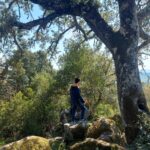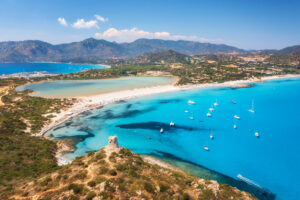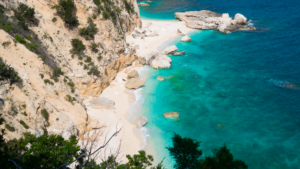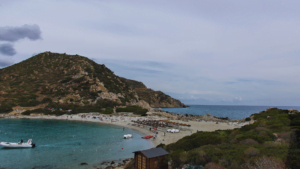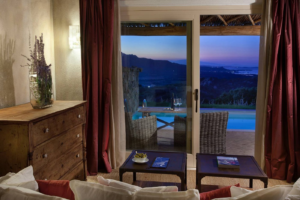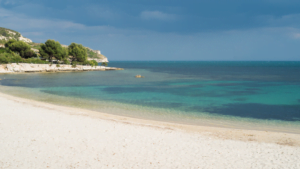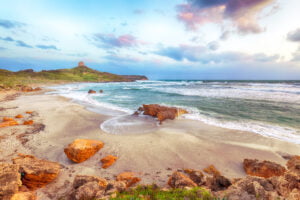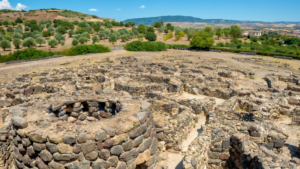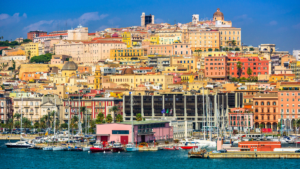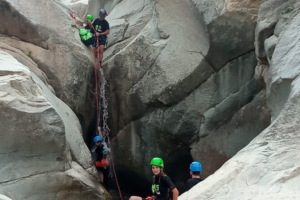Sardinia, an island renowned for its crystal-clear waters and sandy beaches, harbors a lesser-known but equally enchanting side: its vast and varied natural landscapes. The island’s dedication to preserving these landscapes is evident in its numerous national parks and nature reserves, which are essential not only for maintaining the local biodiversity but also for upholding the island’s unique geology and cultural heritage.
The protected areas you will discover in this page serve a dual purpose. Firstly, they are vital for conserving the ecological balance, providing sanctuary for numerous species of flora and fauna, many of which are endemic to the region. Secondly, they play a crucial role in promoting sustainable tourism. By focusing on conservation, Sardinia offers visitors a chance to experience nature responsibly and sustainably, which in turn fosters a deeper appreciation and respect for the environment.
National Parks of Sardinia
Asinara National Park
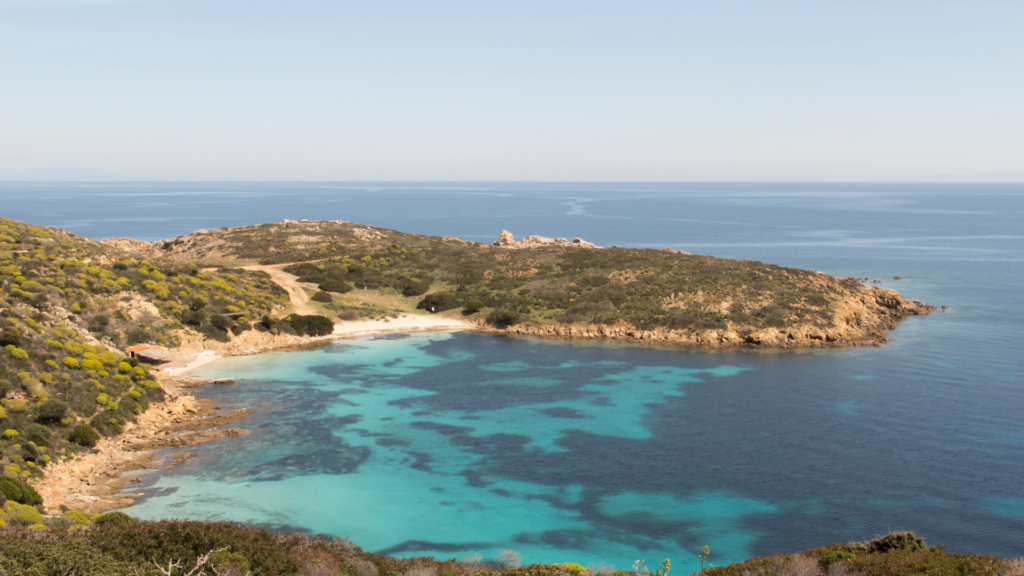

Asinara National Park, located on the island of the same name, features a population of unique albino donkeys, distinguishing it from other wildlife reserves.
Historically, Asinara served as a maximum-security prison, which preserved its natural environment due to restricted human access. Since becoming a national park, it has opened to the public, offering a blend of natural exploration and historical insight. The park is accessible by ferry, and visitors can explore the island through guided tours that highlight its diverse flora and fauna as well as its fascinating past.
La Maddalena Archipelago National Park
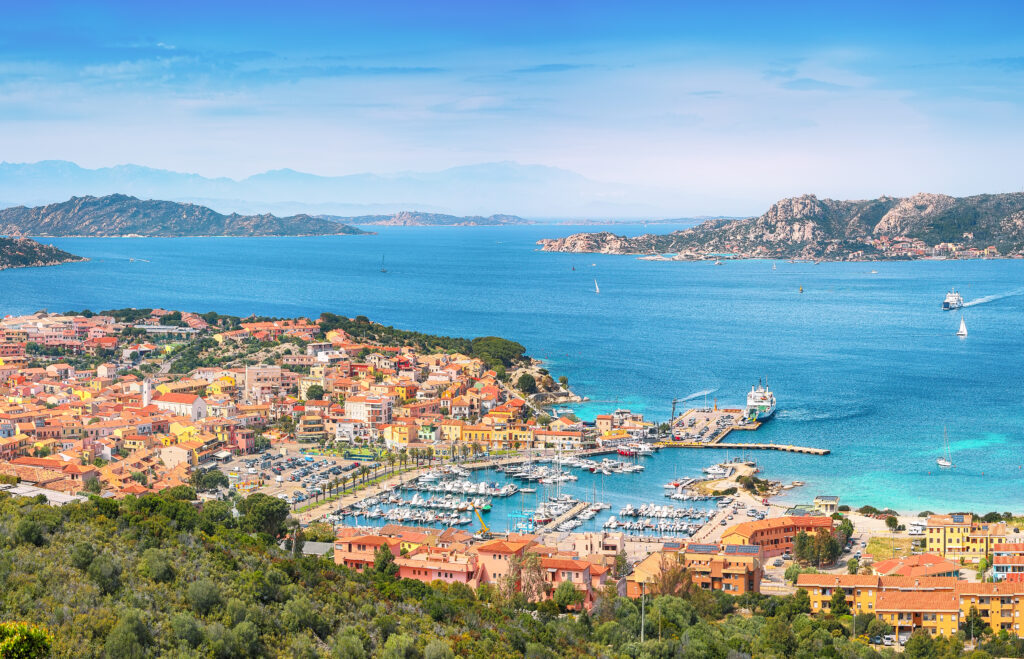

This national park comprises several islands and islets, forming a breathtaking archipelago off the coast of Sardinia. Known for its clear blue waters, vibrant marine life, and the iconic pink sand beaches, particularly on the island of Budelli, La Maddalena Archipelago is a hub for marine conservation.
The park is accessible by boat from Palau, and visitors can engage in various activities such as snorkeling, diving, and sailing. The archipelago also offers well-marked hiking trails on the larger islands like Caprera and La Maddalena itself.
Gennargentu National Park
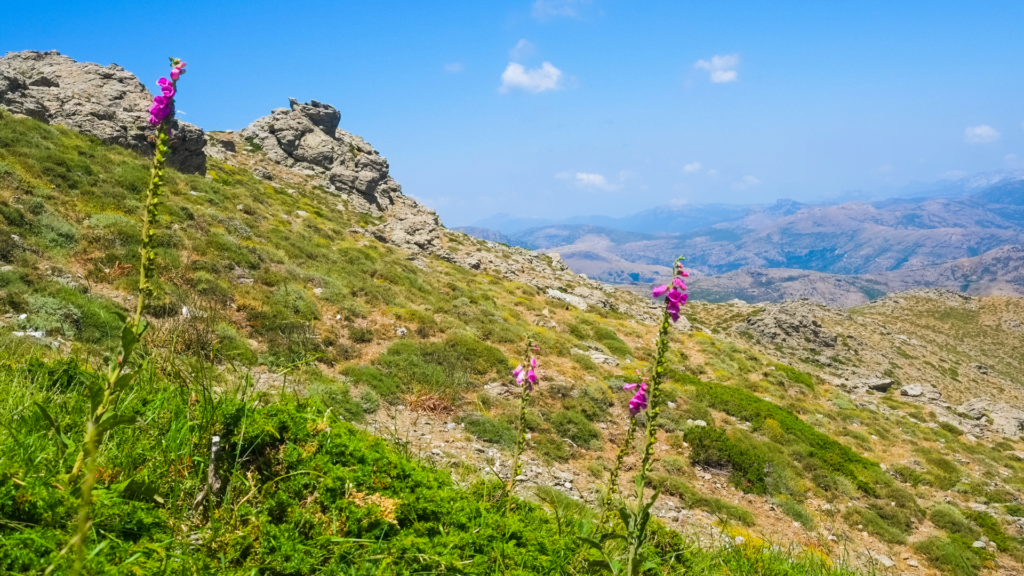

Encompassing the highest mountain range in Sardinia, Gennargentu National Park offers a dramatic contrast to the island’s coastal regions. This park features a rugged landscape with peaks like Punta La Marmora, Sardinia’s highest point, which provides breathtaking views across the island. The area is home to diverse habitats that support an array of wildlife, including the golden eagle and the Sardinian wild cat.
Visitors can enjoy a variety of outdoor activities such as hiking, snow sports in the winter, and exploring the ancient shepherd paths that crisscross the park.
Key Nature Reserves and Regional Parks
Molentargius Nature Reserve
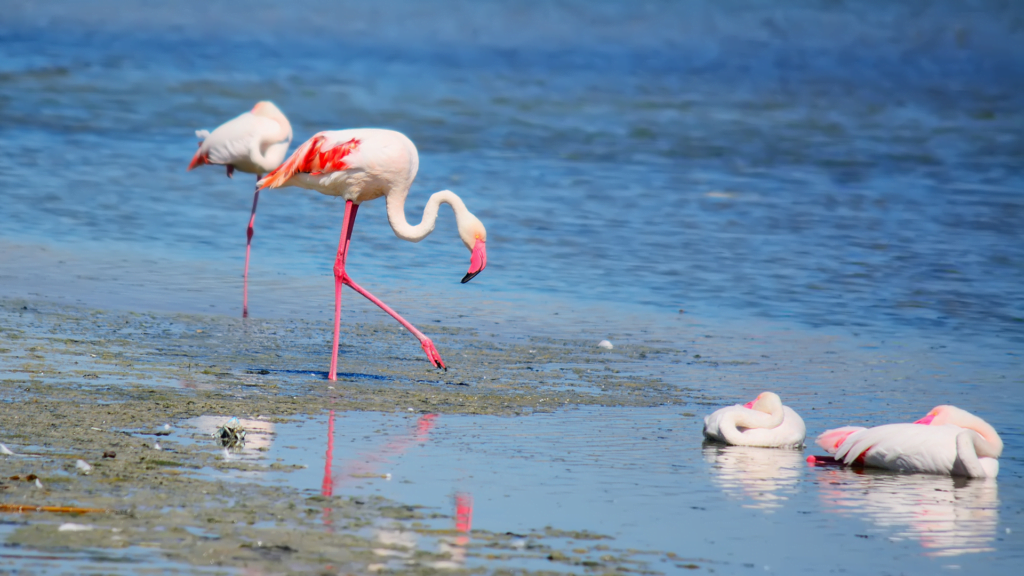

Molentargius Nature Reserve, located near Cagliari, is renowned for its vibrant flamingo populations. This juxtaposition of natural beauty against an urban backdrop makes it one of the most unique ecological sites on the island.
The reserve was historically a saltworks, and the salt pans have been converted into habitats that attract a diverse range of bird species, especially during migration periods. Visitors can explore the area via pedestrian paths and enjoy bird watching throughout the year.
Regional Natural Park of Tepilora, Sant’Anna and Rio Posada
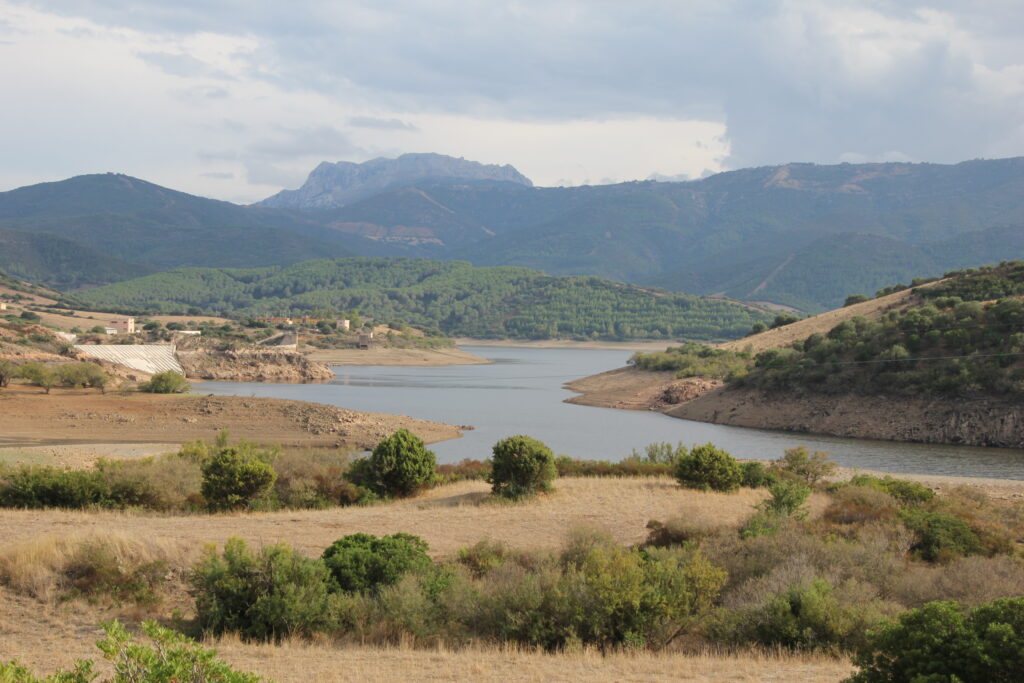

This regional park is a crucial water catchment area for Sardinia, featuring lush forests and rivers that nurture a variety of endemic species. The park’s landscape is characterized by its biodiversity, including dense woodlands and pristine streams. It offers several hiking trails that allow visitors to immerse themselves in its serene environment and observe its rich flora and fauna, making it a vital area for ecological research and nature conservation.
Oasi Bidderosa
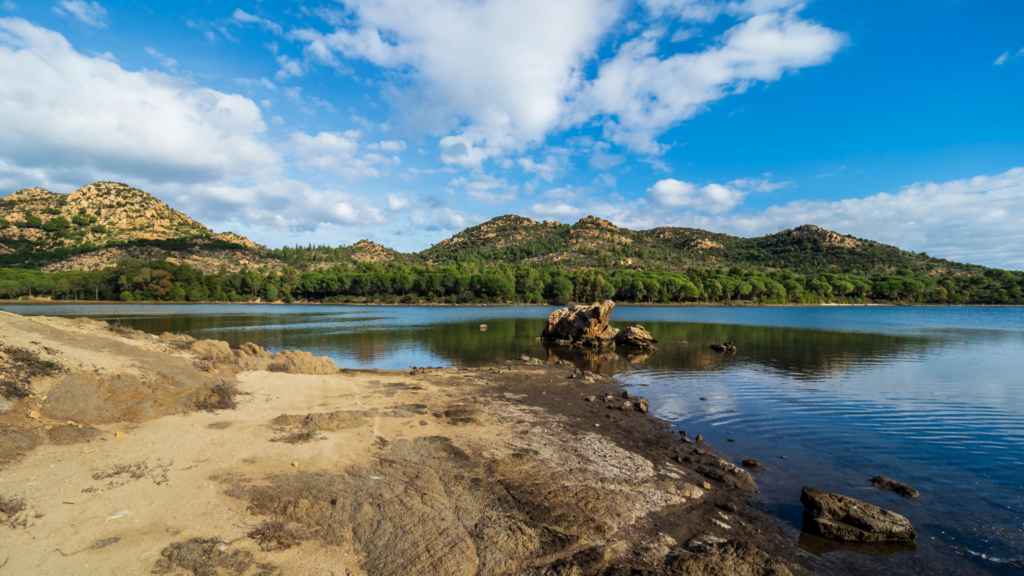

Oasi Bidderosa is celebrated for its pristine beaches surrounded by Mediterranean scrubland, which provide a perfect escape into nature. This reserve offers five kilometers of unspoiled coastline, accessible via controlled entry to preserve its natural beauty.
The area is dotted with walking trails that meander through pine forests and lead to secluded beaches, ideal for relaxation and nature walks. Visitors can appreciate the tranquility and the untouched landscape of one of Sardinia’s most beautiful natural settings.
Giara di Gesturi
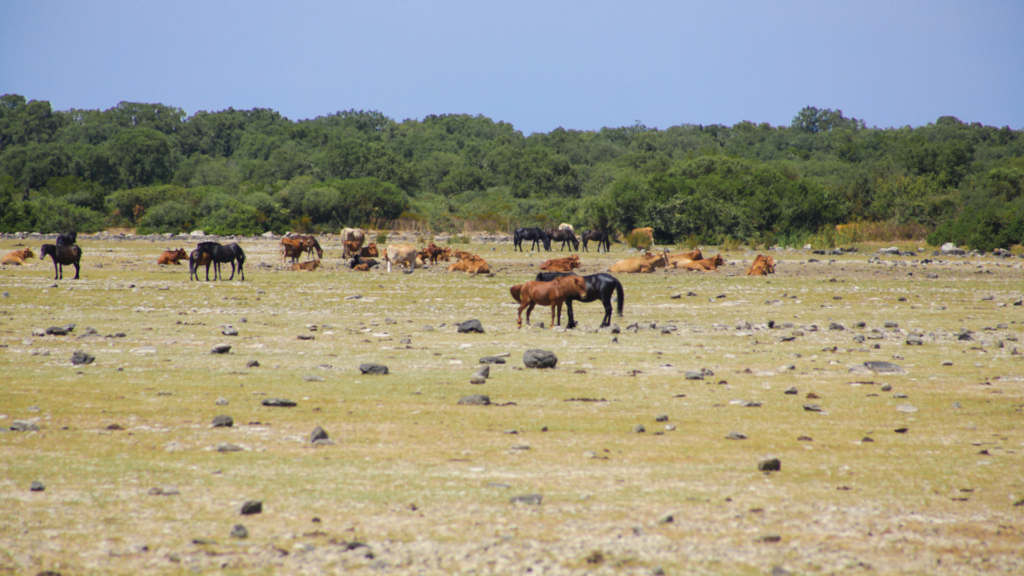

Giara di Gesturi is renowned for its high plateau, which hosts one of the last populations of wild horses in Europe, known locally as “Cavallini della Giara.”
The park is also characterized by dense oak forests and numerous temporary ponds that form in the rainy season, creating a unique ecosystem. This environment supports a diverse array of plant and animal life, making it a significant area for conservation and study. Visitors can explore the trails on foot or by bike, enjoying the serene landscape and the sight of wild horses roaming freely.
Marghine and Goceano Park
Located in the heart of Sardinia, Marghine and Goceano Park is noted for its expansive thick woodlands and rugged mountainous terrain. This less frequented park offers a quiet retreat into nature, with extensive trails for hiking and mountain biking.
The park’s diverse habitats support a wide variety of wildlife, including several species of birds and mammals. It is an ideal spot for those looking to escape the more tourist-heavy areas and enjoy solitude amidst nature.
Gorropu Gorge
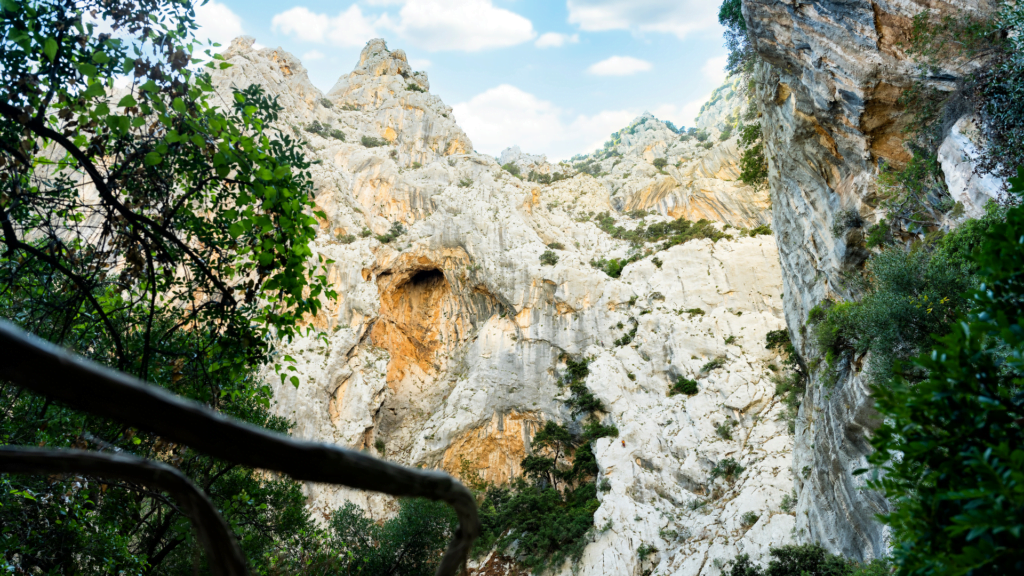

Known as Europe’s deepest gorge, Gorropu Gorge offers a dramatic and challenging landscape for adventurous hikers. The gorge features towering limestone walls that reach heights of over 400 meters, creating a spectacular natural wonder.
Hiking through the gorge provides a thrilling experience with its narrow passages and rugged terrain. It is a popular destination for rock climbers and hikers looking for a challenging outdoor adventure in one of the most impressive natural settings in Sardinia.
Altopiano di Golgo
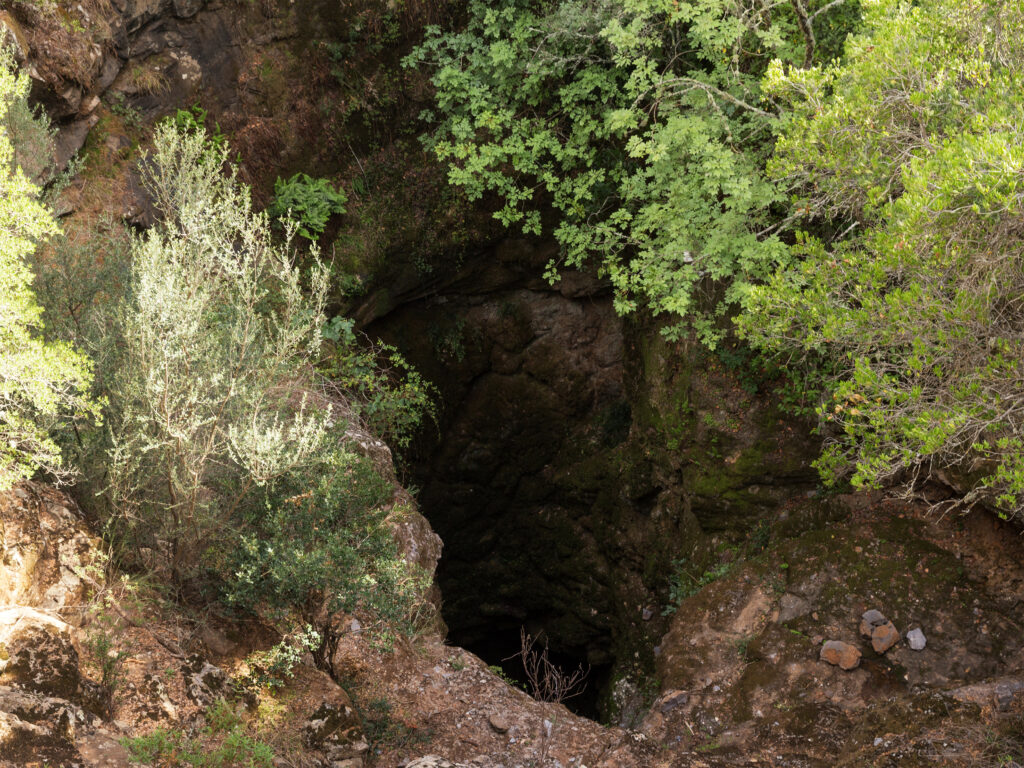

Altopiano di Golgo, a vast plateau located on the eastern part of Sardinia, combines natural beauty with significant archaeological interest. The area is known for its expansive landscapes, dotted with ancient Nuragic ruins, early Christian churches, and remnants of old settlements. This plateau offers a unique blend of history set against the backdrop of rugged natural beauty, ideal for hiking and historical tours.
Limbara Mountain Park
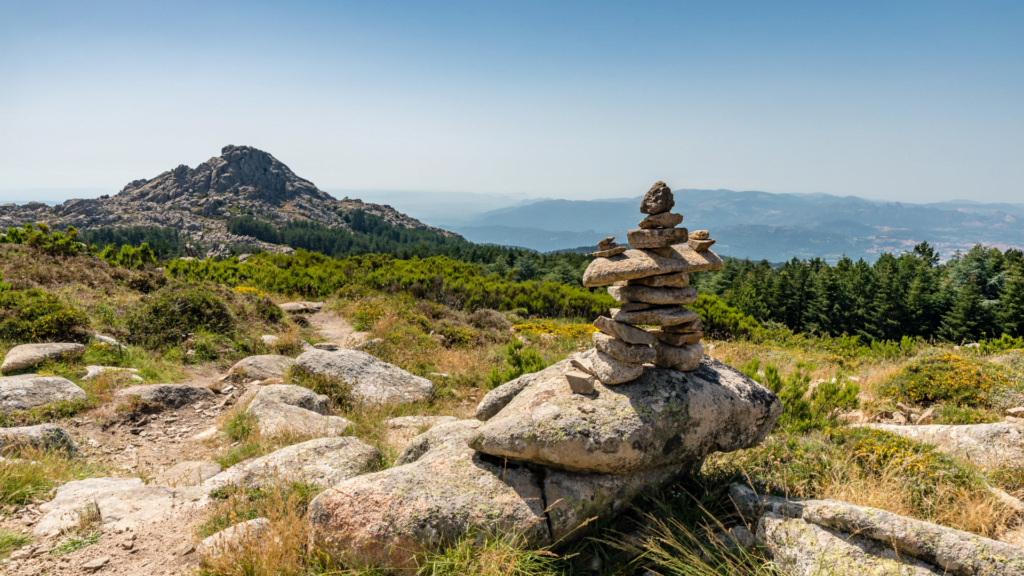

Limbara Mountain Park is characterized by its dominant granite peaks that offer panoramic views across northern Sardinia. The park’s diverse terrain includes dense forests and a variety of endemic plants, making it a hotspot for botanists and nature enthusiasts.
The well-marked trails and scenic viewpoints make it a popular destination for hikers looking to explore Sardinia’s mountainous landscapes.
Sinis Montiferru Park
Located on the western coast of Sardinia, Sinis Montiferru Park offers a stunning combination of coastal and mountainous landscapes.
The area is full with biodiversity, featuring a range of ecosystems from saltwater lagoons to dense oak forests. Historical sites, including Phoenician ruins and Roman relics, add a layer of cultural depth, making it a compelling destination for both natural and historical exploration.
Monte Arci Park
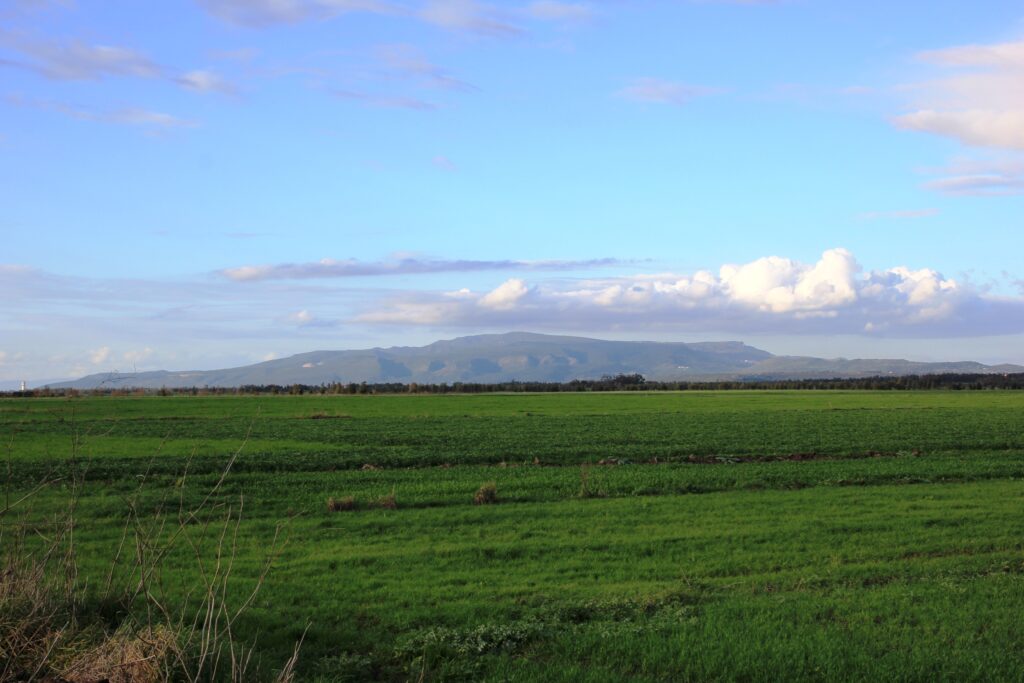

Monte Arci is renowned for its extensive obsidian flows, which have played a crucial role in the island’s prehistoric economy as a source of material for tool making.
The park not only offers insights into the geological formation of obsidian but also hosts a variety of archaeological sites where these ancient uses are displayed. Trails across the park allow visitors to explore its natural and archaeological landscapes, making it a significant educational and ecological resource.
Monte Linas-Marganai-Oridda-Montimannu Park


Monte Linas-Marganai-Oridda-Montimannu Park is a lush expanse of forested landscape in southern Sardinia. This park is particularly important for the conservation of Sardinia’s endemic deer, which roam freely within its boundaries.
The park’s vast forests also provide a rich habitat for other wildlife, offering excellent opportunities for wildlife watching and nature photography. Hiking trails wind through the park, allowing visitors to fully immerse themselves in the serene and dense woodlands.
Sulcis Park
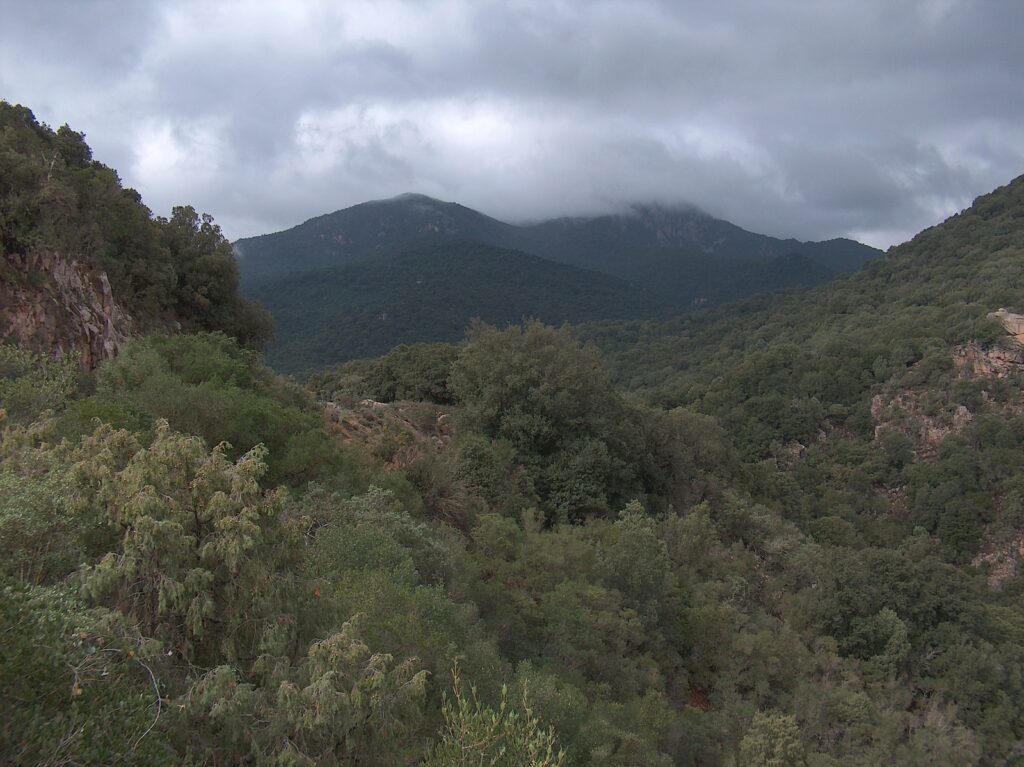

Sulcis Park covers a large area in southwestern Sardinia and is noted for its significant biodiversity. The park includes a variety of ecosystems, from Mediterranean maquis to ancient oak forests, which serve as important bird habitats, including for rare species like the griffon vulture.
The diverse environments within the park make it a vital area for bird watching and ecological studies, as well as providing trails for both casual visitors and serious trekkers.
Sette Fratelli-Monte Genis Regional Park
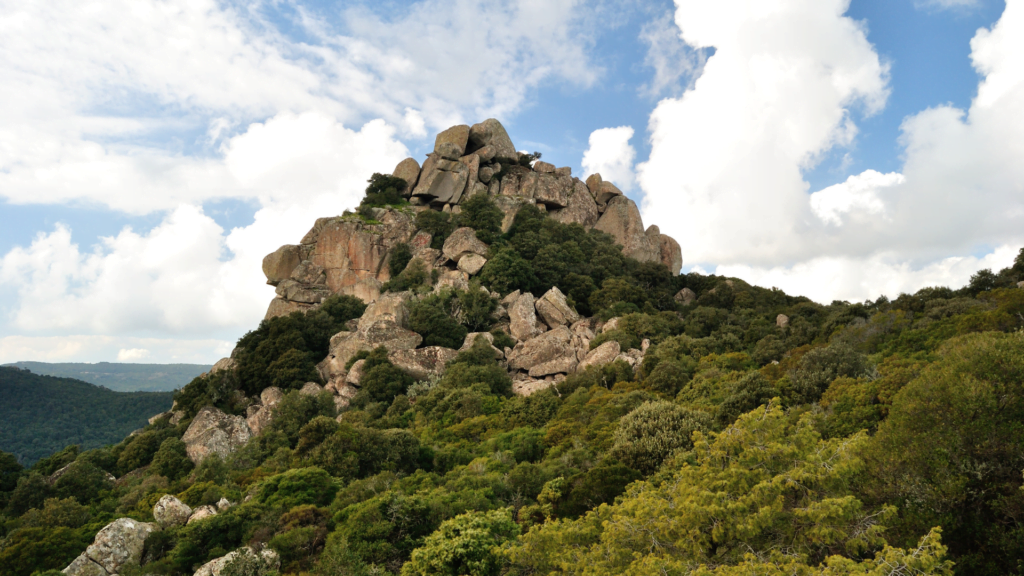

Sette Fratelli-Monte Genis Regional Park, located in southeastern Sardinia, is known for its expansive dense forests, which serve as a sanctuary for wildlife including the Sardinian deer and wild boar.
The park’s rugged terrain, covered with thick vegetation, offers a true wilderness experience and is a popular spot for hiking and nature exploration. The presence of several streams and springs adds to the park’s allure, providing refreshing stops along the trails and supporting a rich variety of plant life.
Parco di Porto Conte and Capo Caccia (Alghero)
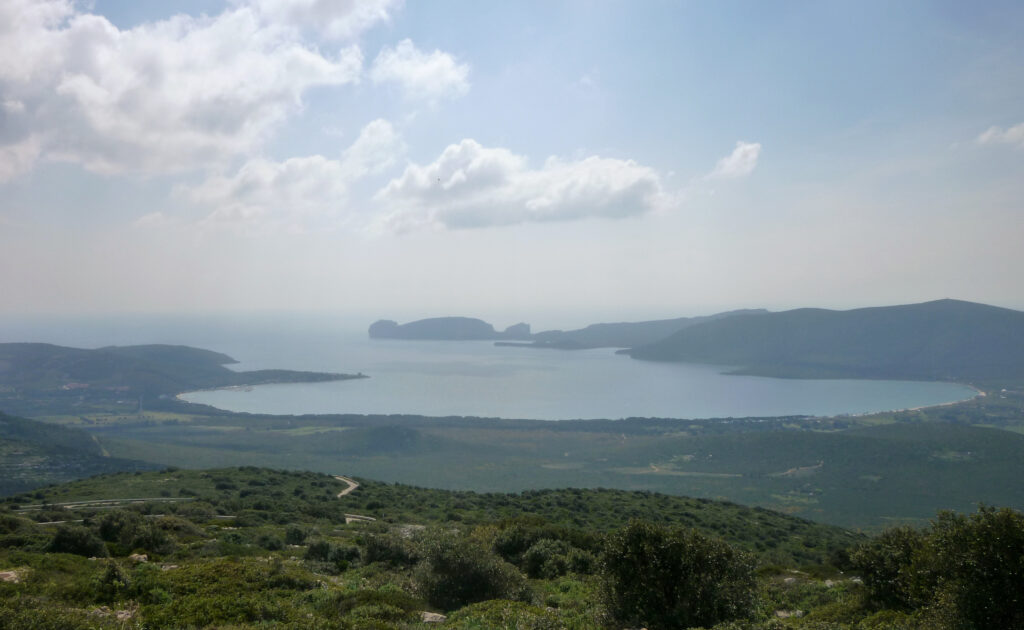

Parco di Porto Conte, combined with the stunning cliffs of Capo Caccia, forms one of the most captivating landscapes in western Sardinia. The park is known for its rich biodiversity, both terrestrial and marine, including the famous Neptune’s Grotto, a marine cave accessible by boat or via a steep stairway descending the cliff.
The area’s crystal-clear waters are ideal for snorkeling and diving, offering a view of underwater marine life and submerged caves. The park’s terrestrial part boasts dense Mediterranean maquis and is a sanctuary for a variety of bird species, making it a popular spot for bird watching and hiking along the scenic coastline.
Practical Information for Visitors
Best Times to Visit Each Park
- Asinara National Park: Best visited during spring and autumn to enjoy mild weather and active wildlife, especially the unique albino donkeys.
- La Maddalena Archipelago National Park: Ideal in late spring through early autumn when the weather is suitable for swimming and boating around the islands.
- Gennargentu National Park: Spring for wildflower blooms and autumn for foliage; winter is great for snow sports enthusiasts.
- Molentargius Nature Reserve: Best in spring and autumn when flamingos and other migratory birds are most active.
- Giara di Gesturi: Spring is perfect to see the wild horses among lush vegetation and blooming flowers.
Available Activities
- Hiking: Many of the parks in Sardinia feature extensive trail networks that cater to all levels of hikers, from short, easy walks to rigorous multi-day treks. Trails often lead to breathtaking views, secluded beaches, or through historic sites.
- Wildlife Watching: The diverse ecosystems in Sardinian parks are ideal for wildlife enthusiasts. Depending on the park, visitors might see endemic species such as Sardinian deer, wild boar, flamingos, or even the rare albino donkeys of Asinara.
- Cultural Exploration: Sardinia’s parks are not only natural wonders but also cultural treasures. Visitors can explore ancient Nuragic ruins, Roman artifacts, and traditional shepherd paths, providing a deep dive into the island’s rich history and cultural heritage.
Tips for Visiting
- Best Seasons: The best time to visit most parks is during the spring (April to June) and autumn (September to November) when the weather is mild, and the natural scenery is particularly vibrant. Summer can be very hot, especially for strenuous activities like hiking, while some parks offer snow sports opportunities in winter.
- Necessary Gear: Depending on the activity, visitors should pack appropriate hiking shoes, sun protection (hat, sunscreen), a sufficient water supply, and possibly a camera for wildlife and scenic photography. For cultural sites, a guidebook might enhance the experience.
- Guidelines for Responsible Tourism:
- Stay on Marked Trails: To protect the natural habitat and prevent erosion, it’s important to stay on designated paths.
- No Littering: Always carry out what you bring in to keep the parks clean and protect wildlife.
- Respect Wildlife: Observe animals from a distance without feeding or disturbing them.
- Cultural Respect: Treat all cultural sites with respect, avoiding any damage or removal of artifacts.
- Support Local Communities: Where possible, engage local guides and purchase local products to support the economies of surrounding communities.
- Support Conservation Efforts: Participate in or contribute to conservation initiatives if available, and educate yourself about the park’s ecology and conservation needs.
Essential Gear to Bring
- General Gear: Weather-appropriate clothing, sturdy hiking boots, a backpack, water bottle, sunscreen, and a hat.
- Specific Gear:
- For coastal parks like La Maddalena, include snorkeling equipment and a swimsuit.
- For mountainous areas like Gennargentu, bring layered clothing, a windbreaker, and possibly trekking poles.
- Bird watchers in Molentargius should bring binoculars and a field guide.
Conclusion: The Value of Sardinia’s Protected Areas
Sardinia’s network of national parks and nature reserves is a testament to the island’s deep commitment to environmental conservation and sustainable tourism. These protected areas not only safeguard the region’s biodiversity but also offer enriching experiences that connect visitors deeply with nature.
Exploring these landscapes, from the albino donkeys of Asinara National Park to the rugged peaks of Gennargentu National Park, provides a unique opportunity to witness the variety of life that thrives in these habitats. The parks are vital for the protection of numerous species of flora and fauna, some of which are endemic to the island and cannot be found anywhere else in the world.
The integration of cultural heritage with natural beauty, as seen in the archaeological sites across Altopiano del Golgo and the historical pathways of Monte Arci Park, enriches the visitor experience, offering insights into the human history that has shaped the island alongside its natural history.
By visiting these areas, tourists not only contribute to the local economy but also support crucial conservation efforts that maintain the health of these ecosystems. Each visit helps promote the importance of preserving such incredible natural environments. Sardinia’s parks and reserves demonstrate the value of conservation tourism and how it can lead to a more sustainable future, ensuring that these pristine environments continue to inspire and awe future generations.

